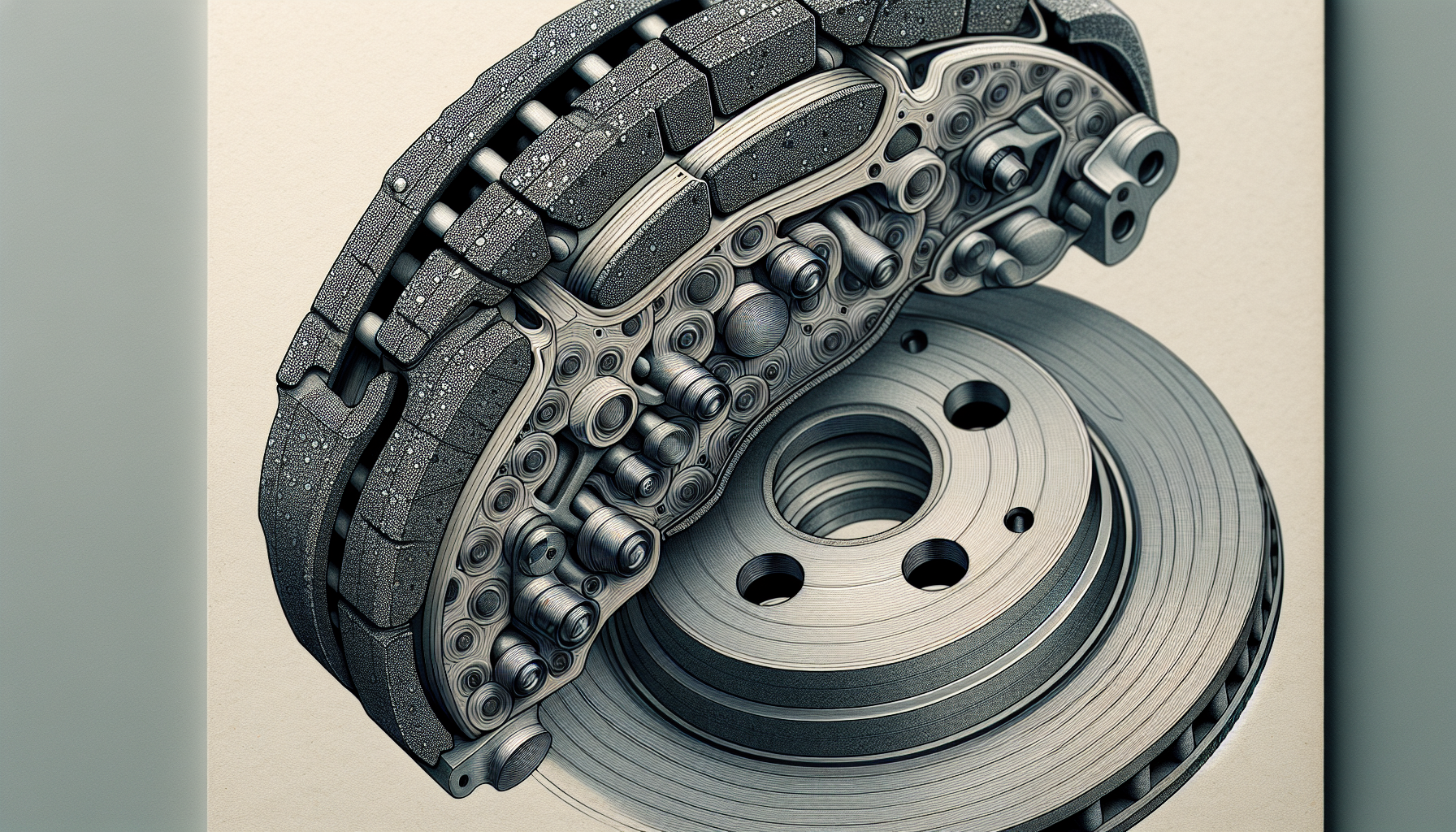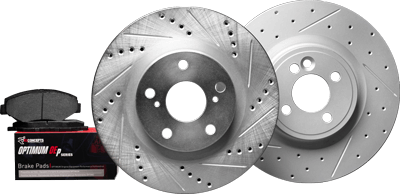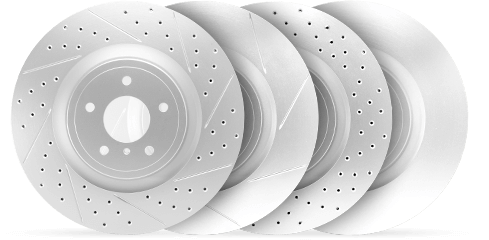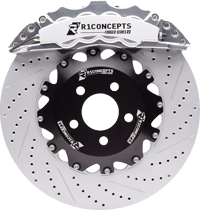Ready to optimize your vehicle’s braking performance? Bedding brakes is the key. Direct and to the point, this guide will show you exactly how to bed your brakes, the benefits you’ll gain, and the smoother, more reliable braking experience you can expect.
Key Takeaways
- Bedding brakes is a three-phase process comprising light braking, aggressive braking, and cooling, which prepares the brake system for optimal performance and durability.
- The need for and specifics of the bedding process can vary based on brake type (disc vs. drum) and pad material (performance vs. everyday), with different procedures designed to optimize the interface and effectiveness of the various systems.
- Bedding is necessary after installing new brake pads or rotors, as well as with the commencement of driving a new vehicle, to ensure proper functionality, and should be done in a safe location using proper techniques for both effectiveness and safety.
Step-by-Step Guide to Bedding Brakes

Bedding in your brake pads and rotors is a crucial step for vehicle owners to ensure optimal braking performance. This process cleans the rotor surfaces and creates a consistent, uniform layer of pad material through a combination of abrasive and adherent friction.
The bedding procedure includes three phases: light braking to warm up the system, aggressive braking to establish the pad material layer, and a cooling phase to prevent damage. Let’s take a closer look at each essential stage.
Light Braking Phase
Definition: The light braking phase serves as the initial warm-up for the brake system. It involves applying the brakes gently to gradually raise the temperature of the brake pads and rotors, ensuring they are not shocked by sudden temperature changes.
Procedure: Start the brake bedding with gentle braking. This first step gets the pads and rotors ready, like a warm-up before a workout.
Begin with several stops from a medium speed, pressing the brake pedal with a medium force. Do this lightly at first, then gradually press harder, about four to ten times. This slowly heats up the brakes, preparing them for the next steps.
Aggressive Braking Phase
Definition: The aggressive braking phase is where the majority of the pad material transfer to the rotor surface occurs. This heavy braking phase requires stronger and more sudden braking to generate higher temperatures that facilitate the bonding of brake pad material onto the rotor surface.
Procedure: After the light braking phase, next would be this phase, to do this, move on to harder braking. This step involves making several quick stops, like going from 40 mph to 10 mph a few times, then from 35 mph to just above a full stop. Do this about five times for each speed set. This tests your car’s ability to slow down quickly and keeps the brakes working evenly.
Be careful not to stop completely when doing these hard brakes. Stopping all the way can cause the pad material to stick to the rotors, which can damage your brakes and make them less effective.
By finishing this step right, you’ll have a smooth layer of brake pad material on the rotors. This layer helps your brakes work quietly and with less vibration and shaking when you use them.
Cooling Phase
Definition: The cooling phase is the final step in the bedding process, allowing the brakes to cool down gradually to ambient temperature. This phase is critical to avoid thermal shock and to ensure the newly transferred pad material properly adheres to the rotor surfaces without causing damage.
Procedure: After the hard braking, let your brakes cool down. This rest period is as important as relaxing after intense exercise. It prevents damage like warping to your brakes.
To cool the brakes properly:
- Drive at a steady, moderate speed without using the brakes much, so the temperature drops slowly.
- Think of it as a slow walk to cool down after a run.
- Keep driving like this for at least 15 minutes without stopping, after the hard braking.
The Importance of Bedding Brakes
Maybe you’re wondering, “Do I have to follow all these steps?” You might think just putting in new brake pads and driving off is enough. But bedding brakes is important. It helps your brakes work better, last longer, and makes them quieter when you use them.
By doing the bedding process right, you make a smooth layer on the rotor, which stops the brakes from wearing unevenly and shaking. This technique is even more important depending on what kind of brakes and pads you have.
Disc vs Drum Brakes
The bedding process is influenced by the specific kind of brakes installed on your vehicle. With disc and drum brakes being the primary variants, each operates differently and thus demands a custom approach to bedding.
For disc brake systems, the bedding routine often involves multiple stops that produce heat in order to transfer material from the brake pad onto the rotor’s surface. In contrast, because of their particular construction, drum brakes may require a different method for effective bedding. Understanding these variations is crucial for maintaining both optimal performance and safety of your vehicle’s braking system.
Performance vs Everyday Brake Pads
The specific brake material in brake pads is as crucial as the type of brakes themselves. The materials employed for performance and everyday use in brake pads vary, catering to distinct driving conditions, which consequently affects the bedding process required.
Performance brake pads necessitate a more rigorous bedding procedure to enhance their interaction with the rotor surface. If this bedding process is not carried out properly for these performance-oriented pads, it can lead to diminished braking capabilities and hastened deterioration. Conversely, normal usage brake pads undergo a less intense series of gentle braking maneuvers during their bedding routine. This ensures they function efficiently and have an extended life span without requiring the aggressive breaking needed by performance versions.
Identifying When Bedding is Necessary
Understanding when to do the bedding-in process for your brakes is just as important as knowing how to do it. You need to bed in your brakes after you put in new brake pads or rotors, or when you first start driving a new car. This makes sure your brakes work the right way.
Whenever you install new brake pads, put new rotors on your car, or drive a new car for the first time, it’s very important to start the bedding-in process. This helps your brakes work the best they can.
When You Put in New Brake Pads
Once you have new brake pads on your car, the next step is to bed them in. This is a key step after you add new pads to your brake system because it makes them perform better.
Bedding in new pads means you’re making sure a layer of the pad material sticks to the rotors evenly. This is very important for good braking. When you do the bedding-in right after putting in new pads, you help your brakes to work really well and make your car stop when you need it to.
When You Install New Rotors
Putting new brake rotors on your car means you should bed them in too. Doing the bedding-in process is important to make your brakes work the best they can and to make the parts last longer.
When you bed in new brake rotors, you get rid of any shiny surface or dirt on them. This makes sure the pads and rotors touch each other in the best way. When you bed in your rotors the right way, you put a layer of pad material on them that’s the same all over. This stops your brakes from shaking, which some people think happens because the rotors are bent.
Safe Locations and Techniques for Bedding Brakes
The process of bedding brakes should not be undertaken just anywhere. It necessitates a secure area devoid of traffic where repeated stops can safely occur. It’s akin to selecting the ideal gym for your brakes’ exercise routine.
The success and safety of the bedding process are highly dependent on using correct braking methods. We will delve deeper into these important facets in our discussion.
Finding the Right Location
Select an area devoid of traffic when undertaking the bedding process for your brakes, to avoid disruptions and maximize safety. Optimal spots include vacant parking lots, remote roads, or industrial areas that experience little vehicular activity.
Ensure that the spot you select has either a lengthy gentle incline or a clear stretch of roadway where numerous controlled stops can be executed with ease. For successful bedding in your brakes, it’s advantageous if this location offers level terrain permitting acceleration up to 45-50 MPH before briskly decelerating.
Proper Braking Techniques
The technique used during the braking process is equally as important as selecting the right location for performing the brake bedding procedure. The aim here is to reach a predetermined speed and then use moderate to strong pressure on the brakes, bringing your vehicle almost to a stop. This should be done repeatedly.
When engaging in gentle braking, maintain an average speed and carefully apply the brakes so that you slow down without coming to full stops. This will generate initial warmth within the brake system. Once you’ve completed these steps of bedding, it’s crucial to park your car and let its brakes thoroughly cool off without any additional application of brakes, this ensures that material from pads transfers evenly onto rotors.
Expected Changes in Braking Feel After Bedding
After completing the bedding-in process, you’ll notice changes in how your vehicle’s brakes respond. A key improvement is the superior feeling of braking that comes from a consistent, even layer of pad material being deposited on the rotor surface.
As an outcome of this procedure, known as bedding in, the performance of your brake becomes steadier and more reliable — hallmarks indicating its successful execution. Let’s explore these modifications further.
Improved Braking Performance
Bedding in brake pads and rotors is crucial for enhancing braking performance. This process guarantees that the brakes deliver a steady and uniform force when applied, which helps avoid uneven wear or juddering during stops.
Once the bedding-in procedure has been completed, there’s an increase in stopping power as well as more precise responsiveness from the braking system due to perfect alignment between the pads and rotors. In essence, properly bedded brakes function seamlessly like a finely tuned machine offering efficient performance.
Reduced Brake Noise
After the bedding-in process for your brakes, one clear advantage is a decrease in brake noise. The irritation of squeals or squeaks from your brakes should diminish thanks to this procedure.
When you’ve completed the proper bedding-in of new brake pads, you’re likely to notice that noises like squealing when applying light pressure during gradual halts become fainter. These initial sounds may continue until the pads are thoroughly broken in. In summary, correctly bedding in new brake pads usually leads to smoother and quieter operation with minimal brake squeal sound.
Timeframe for Optimal Brake Performance
Optimal performance from cars with new brakes can be expected after they have undergone the bedding-in process, which involves a driving period ranging between 100 and 400 miles to fully bed in.
To ensure readiness for regular use, it’s essential to let the brakes cool down for a minimum of 15 minutes post-bedding. While the time needed to bed in fresh brakes may differ, drivers should look forward to peak brake performance after extensive hours of operation following proper bedding and sufficient cooling periods.
Alternatives to Dedicated Bedding Procedures
Some brake pads are already prepared for use and don’t need the usual bedding-in steps. Manufacturers claim these pads work perfectly right away after being installed. Instead of the traditional bedding-in, you can just use gentle braking for the first few hundred miles. This helps the brakes perform well over time, usually after driving 600 miles without having to do the full bedding-in when it’s not possible. These new options help make sure your brakes work well without needing a strict bedding-in process.
Summary
We’ve covered a lot of ground in this guide, from the step-by-step bedding process to the importance of bedding brakes, safe locations and techniques, and even alternatives to traditional bedding procedures. The proper bedding of brakes is essential for achieving optimal braking performance, system efficiency, and responsiveness, especially after replacing brake pads or installing new rotors.
Bedding in your brakes isn’t just a one-and-done task. It’s an ongoing commitment to the safety and performance of your vehicle. So, the next time you get new brake pads or rotors, remember to give them the proper introduction to your vehicle through the bedding break in process first. Your brakes – and your safety – will thank you.









